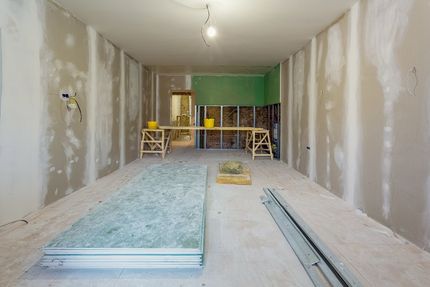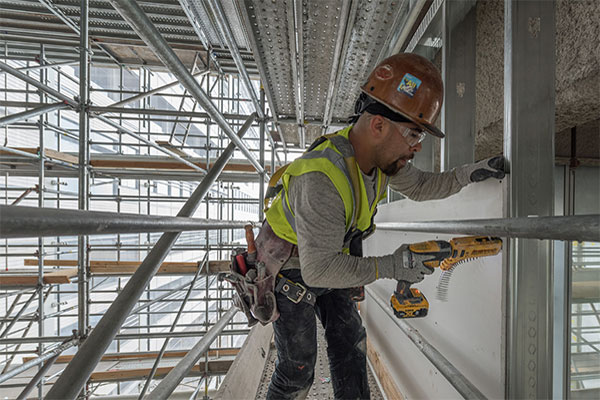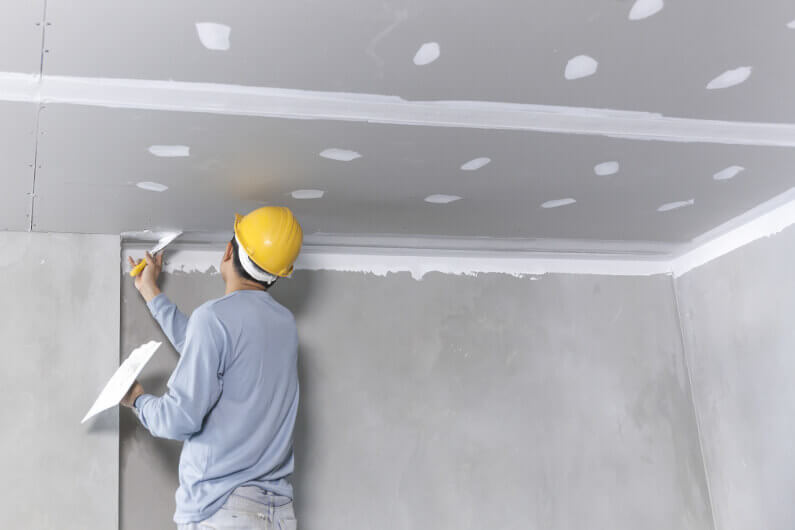Expert Sheetrock Repair Fort Worth for Quick Fixes
Expert Sheetrock Repair Fort Worth for Quick Fixes
Blog Article
Complete Guide to Efficient and Reliable Drywall Installment
Drywall installation is an important component of any type of building and construction or restoration project, requiring a thorough technique to ensure both effectiveness and dependability. It is crucial to discover the subtleties of each action in the process, as they jointly add to the overall success of the drywall setup.
Essential Devices for Drywalling
When starting a drywall setup job, having the right devices is essential for attaining a professional finish. Necessary devices include a drywall knife, tape action, and a T-square, which are fundamental for accurate measurements and smooth cuts. A drywall lift is additionally very advantageous, particularly for ceiling installments, enabling simpler handling of heavy panels.
For securing the drywall, a cordless drill and drywall screws are essential. The drill should be geared up with a drywall bit to make sure performance and accuracy. In addition, a key tool is the drywall saw, which helps with cutting around other challenges and electrical outlets.

In addition, safety equipment such as security glasses and a dust mask are necessary to guarantee personal safety and security throughout the installment process. Utilizing the right devices not just improves the high quality of the installation yet likewise improves the workflow, making the task a lot more reliable overall.
Preparing the Area

Following, examine the condition of the walls and ceilings. Fix any kind of existing damage, such as holes, fractures, or peeling off paint, to guarantee a smooth and also surface for drywall application. Furthermore, check for electric outlets, pipes lines, and HVAC ducts, noting their locations to avoid issues throughout installation.
It is also important to measure the space precisely, figuring out the measurements of the ceilings and wall surfaces to determine the proper amount of drywall needed. Produce a thorough plan that includes the design and alignment of the drywall panels.
Setup Techniques
Reliable installment methods are important for achieving a professional finish in drywall projects. Appropriate dimension and cutting of drywall sheets are essential steps.
When hanging drywall, start from the leading and job downward, making sure that the long edge of the board is vertical to the framing. Safeguard the sheets with screws as opposed to nails, which give higher holding power and decrease the threat of standing out. Area screws every 12 inches along the edges and every 16 inches in the field of the board.
For corners, make use of edge beads to achieve sharp, clean sides. When setting up on ceilings, make use of a drywall lift or have a partner assist in holding the sheets in position (drywall repair). Keep a space of about 1/4 inch over the flooring and ceiling to fit growth and contraction
Finishing Touches

Begin by using joint tape over the joints. This can be either paper or fiberglass harmonize tape, with paper being favored for its longevity. As soon as the tape is in area, it's time to use the initial coat of joint substance, likewise referred to as mud. Use a 10 to 12-inch taping blade to spread the substance evenly over the taped joints, feathering the sides to blend with the surrounding drywall.
Enable the compound to dry completely, commonly 24-hour. After drying, sand the surface lightly with fine-grit sandpaper to get rid of any blemishes. drywall installation. Repeat the mudding and fining sand procedure, generally two to 3 layers, making redirected here certain each layer is smooth and flush with the drywall surface area
Typical Mistakes to Stay Clear Of
Many DIY enthusiasts experience risks throughout drywall setup that can endanger the last outcomes. One typical error is falling short to appropriately determine and reduce drywall sheets.
An additional constant error is inappropriate attachment. Making use of also couple of screws or nails can bring about loosened drywall, while overdriving fasteners can trigger the paper to tear, compromising the structure. It's essential to maintain consistent spacing, generally every 16 inches, and to ensure that bolts are flush with the surface area.
Additionally, not attending to wetness issues before installment can click to find out more lead to mold growth and architectural damages. Always assess the setting and usage moisture-resistant drywall in high-humidity areas.
Conclusion
Reputable and reliable drywall installation requires careful focus to information throughout the process. Avoiding typical errors better adds to a professional result, highlighting the relevance of accuracy and strategy in effective drywall projects.
It is important to check out the nuances of each step in the procedure, as they jointly add to the general success of the drywall installment.When getting started on a drywall installment task, having the right devices is vital for attaining a specialist finish.For fastening the drywall, a cordless drill and drywall screws are necessary.Appropriately preparing the room is necessary for a successful drywall installation.Effective installation techniques are crucial for achieving a professional finish in drywall projects.
Report this page